Evaluating the Effect of Blended and Pure Hydrogen in X60 Pipeline Steel for Low-Pressure Transmission Using Hollow-Specimen Slow-Strain-Rate Tensile Testing
Abstract
:1. Introduction
2. Experimental Procedure
2.1. Material and Sample Preparation
2.2. Test Setup and Environment
2.3. Test Procedure
3. Results and Discussion
3.1. Slow-Strain-Rate Test Results
3.2. Fractography Analysis
4. Conclusions
- The yield and tensile strength of both the base and welded materials were not influenced significantly by exposure to hydrogen at the two tested concentrations. However, the ductility of both materials was notably reduced.
- The hydrogen embrittlement index (HEI) used to represent ductility for both the base and welded materials showed limited change across both hydrogen concentrations (20% and 100%). This indicates that even at low hydrogen concentrations, there can be significant susceptibility to embrittlement.
- The region between the heat-affected and the surrounding base metal in the weld region exhibited the highest embrittlement with hydrogen. The reduced hardness near the heat-affected zone causes localized deformation, facilitating increased hydrogen diffusion and ultimately leading to hydrogen-assisted fractures compared to the base metal.
- Fractography revealed that quasi-cleavage fractures are predominant in the hydrogen-assisted fracture region. Furthermore, highly localized plasticity was observed below the fracture surface. These findings explain the probable effect of the Hydrogen-Enhanced Localized Plasticity (HELP) mechanism.
Supplementary Materials
Author Contributions
Funding
Data Availability Statement
Acknowledgments
Conflicts of Interest
References
- Li, X.; Ma, X.; Zhang, J.; Akiyama, E.; Wang, Y.; Song, X. Review of Hydrogen Embrittlement in Metals: Hydrogen Diffusion, Hydrogen Characterization, Hydrogen Embrittlement Mechanism and Prevention. Acta Metall. Sin. 2020, 33, 759–773. [Google Scholar] [CrossRef]
- Zapffe, C.; Sims, C. Hydrogen embrittlement, internal stress and defects in steel. Trans. Aime 1941, 145, 225–271. [Google Scholar]
- Pfeil, L.B.; Carpenter, H.C.H. The effect of occluded hydrogen on the tensile strength of iron. Proc. R. Soc. Lond. Ser. Contain. Pap. Math. Phys. Character 1997, 112, 182–195. [Google Scholar] [CrossRef]
- Beachem, C.D. A new model for hydrogen-assisted cracking (hydrogen “embrittlement”). Metall. Trans. 1972, 3, 441–455. [Google Scholar] [CrossRef]
- Martin, M.; Connolly, M.; Delrio, F.; Slifka, A. Hydrogen embrittlement in ferritic steels. Appl. Phys. Rev. 2020, 7, 041301. [Google Scholar] [CrossRef] [PubMed]
- Lynch, S. Hydrogen embrittlement (HE) phenomena and mechanisms. In Stress Corrosion Cracking; Elsevier: Amsterdam, The Netherlands, 2011; pp. 90–130. [Google Scholar] [CrossRef]
- Lynch, S. Progress towards Understanding Mechanisms of Hydrogen Embrittlement and Stress Corrosion Cracking. In Proceedings of the CORROSION 2007, Nashville, TN, USA, 11–15 March 2007; p. NACE–07493. [Google Scholar]
- Dear, F.F.; Skinner, G.C.G. Mechanisms of hydrogen embrittlement in steels: Discussion. Philos. Trans. R. Soc. A Math. Phys. Eng. Sci. 2017, 375, 20170032. [Google Scholar] [CrossRef]
- Djukic, M.B.; Bakic, G.M.; Sijacki Zeravcic, V.; Sedmak, A.; Rajicic, B. The synergistic action and interplay of hydrogen embrittlement mechanisms in steels and iron: Localized plasticity and decohesion. Eng. Fract. Mech. 2019, 216, 106528. [Google Scholar] [CrossRef]
- Nibur, K.; Somerday, B. Fracture and fatigue test methods in hydrogen gas. In Gaseous Hydrogen Embrittlement of Materials in Energy Technologies; Elsevier: Amsterdam, The Netherlands, 2012; pp. 195–236. [Google Scholar] [CrossRef]
- ASTM G142-98(2016); Test Method for Determination of Susceptibility of Metals to Embrittlement in Hydrogen Containing Environments at High Pressure, High Temperature, or Both. ASTM International: West Conshohocken, PA, USA, 2016. [CrossRef]
- ISO 11114-4; Test Methods for Selecting Metallic Materials Resistant to Hydrogen Embrittlement. Transportable Gas Cylinders: Compatibility of Cylinder and Valve Materials with Gas Contents. ISO: Geneva, Switzerland, 2017.
- Michler, T.; Ebling, F.; Oesterlin, H.; Fischer, C.; Wackermann, K. Comparison of tensile properties of X60 pipeline steel tested in high pressure gaseous hydrogen using tubular and conventional specimen. Int. J. Hydrogen Energy 2022, 47, 34676–34688. [Google Scholar] [CrossRef]
- Boot, T.; Riemslag, T.A.C.; Reinton, E.T.E.; Liu, P.; Walters, C.L.; Popovich, V. In-Situ Hollow Sample Setup Design for Mechanical Characterisation of Gaseous Hydrogen Embrittlement of Pipeline Steels and Welds. Metals 2021, 11, 1242. [Google Scholar] [CrossRef]
- Chandler, W.T.; Walter, R.J. Testing to determine the effect of high-pressure hydrogen environments on the mechanical properties of metals. In Hydrogen Embrittlement Testing; ASTM International: West Conshohocken, PA, USA, 1974. [Google Scholar]
- Rahimi, S.; Scionti, G.; Piperopoulos, E.; Proverbio, E. Coupled slow strain rate and acoustic emission tests for gaseous hydrogen embrittlement assessment of API X65 pipeline steel. Mater. Lett. 2024, 367, 136598. [Google Scholar] [CrossRef]
- Konert, F.; Wieder, F.; Nietzke, J.; Meinel, D.; Böllinghaus, T.; Sobol, O. Evaluation of the impact of gaseous hydrogen on pipeline steels utilizing hollow specimen technique and μCT. Int. J. Hydrogen Energy 2024, 59, 874–879. [Google Scholar] [CrossRef]
- Konert, F.; Campari, A.; Nietzke, J.; Sobol, O.; Paltrinieri, N.; Alvaro, A. Evaluation of the tensile properties of X65 pipeline steel in compressed gaseous hydrogen using hollow specimens. Procedia Struct. Integr. 2024, 54, 204–211. [Google Scholar] [CrossRef]
- Michler, T.; Freitas, T.; Oesterlin, H.; Fischer, C.; Wackermann, K.; Ebling, F. Tensile testing in high pressure gaseous hydrogen using conventional and tubular specimens: Austenitic stainless steels. Int. J. Hydrogen Energy 2023, 48, 25609–25618. [Google Scholar] [CrossRef]
- Ogata, T.; Ono, Y. Influence of Roughness of Inner Surface of Simple Mechanical Testing Method to Evaluate Influence of High Pressure Hydrogen Gas. In Proceedings of the Volume 6B: Materials and Fabrication, San Antonio, TX, USA, 14–19 July 2019; p. V06BT06A032. [Google Scholar] [CrossRef]
- Ogata, T. Simple Mechanical Testing Method to Evaluate Influence of High Pressure Hydrogen Gas. In Proceedings of the Volume 6B: Materials and Fabrication, Prague, Czech Republic, 15–20 July 2018; p. V06BT06A028. [Google Scholar] [CrossRef]
- Ogata, T. Hydrogen Environment Embrittlement on Austenitic Stainless Steels from Room Temperature to Low Temperatures. IOP Conf. Ser. Mater. Sci. Eng. 2015, 102, 012005. [Google Scholar] [CrossRef]
- Ogata, T. Influence of high pressure hydrogen environment on tensile and fatigue properties of stainless steels at low temperatures. AIP Conf. Proc. 2012, 1435, 39–46. [Google Scholar] [CrossRef]
- Ogata, T.; Balachandran, U.B. Hydrogen environment embrittlement evaluation in fatigue properties of stainless steel SUS304L at cryogenic temperatures. AIP Conf. Proc. 2010, 1219, 25–32. [Google Scholar] [CrossRef]
- Ogata, T. Evaluation of Hydrogen Embrittlement by Internal High-Pressure Hydrogen Environment in Specimen. J. Jpn. Inst. Met. 2008, 72, 125–131. [Google Scholar] [CrossRef]
- Ronevich, J.A.; Somerday, B.P.; San Marchi, C.W. Effects of microstructure banding on hydrogen assisted fatigue crack growth in X65 pipeline steels. Int. J. Fatigue 2016, 82, 497–504. [Google Scholar] [CrossRef]
- ASTM E92-23; Test Methods for Vickers Hardness and Knoop Hardness of Metallic Materials. ASTM: West Conshohocken, PA, USA, 2024. [CrossRef]
- Meng, B.; Gu, C.; Zhang, L.; Zhou, C.; Li, X.; Zhao, Y.; Zheng, J.; Chen, X.; Han, Y. Hydrogen effects on X80 pipeline steel in high-pressure natural gas/hydrogen mixtures. Int. J. Hydrogen Energy 2017, 42, 7404–7412. [Google Scholar] [CrossRef]
- Nguyen, T.T.; Park, J.; Kim, W.S.; Nahm, S.H.; Beak, U.B. Effect of low partial hydrogen in a mixture with methane on the mechanical properties of X70 pipeline steel. Int. J. Hydrogen Energy 2020, 45, 2368–2381. [Google Scholar] [CrossRef]
- Nguyen, T.T.; Bae, K.O.; Jaeyeong, P.; Nahm, S.H.; Baek, U.B. Damage associated with interactions between microstructural characteristics and hydrogen/methane gas mixtures of pipeline steels. Int. J. Hydrogen Energy 2022, 47, 31499–31520. [Google Scholar] [CrossRef]
- Campari, A.; Konert, F.; Sobol, O.; Alvaro, A. A comparison of vintage and modern X65 pipeline steel using hollow specimen technique for in-situ hydrogen testing. Eng. Fail. Anal. 2024, 163, 108530. [Google Scholar] [CrossRef]
- González-Velázquez, J.L. Fractography and Failure Analysis; Structural Integrity; Springer International Publishing: Cham, Switzerland, 2018; Volume 3. [Google Scholar] [CrossRef]
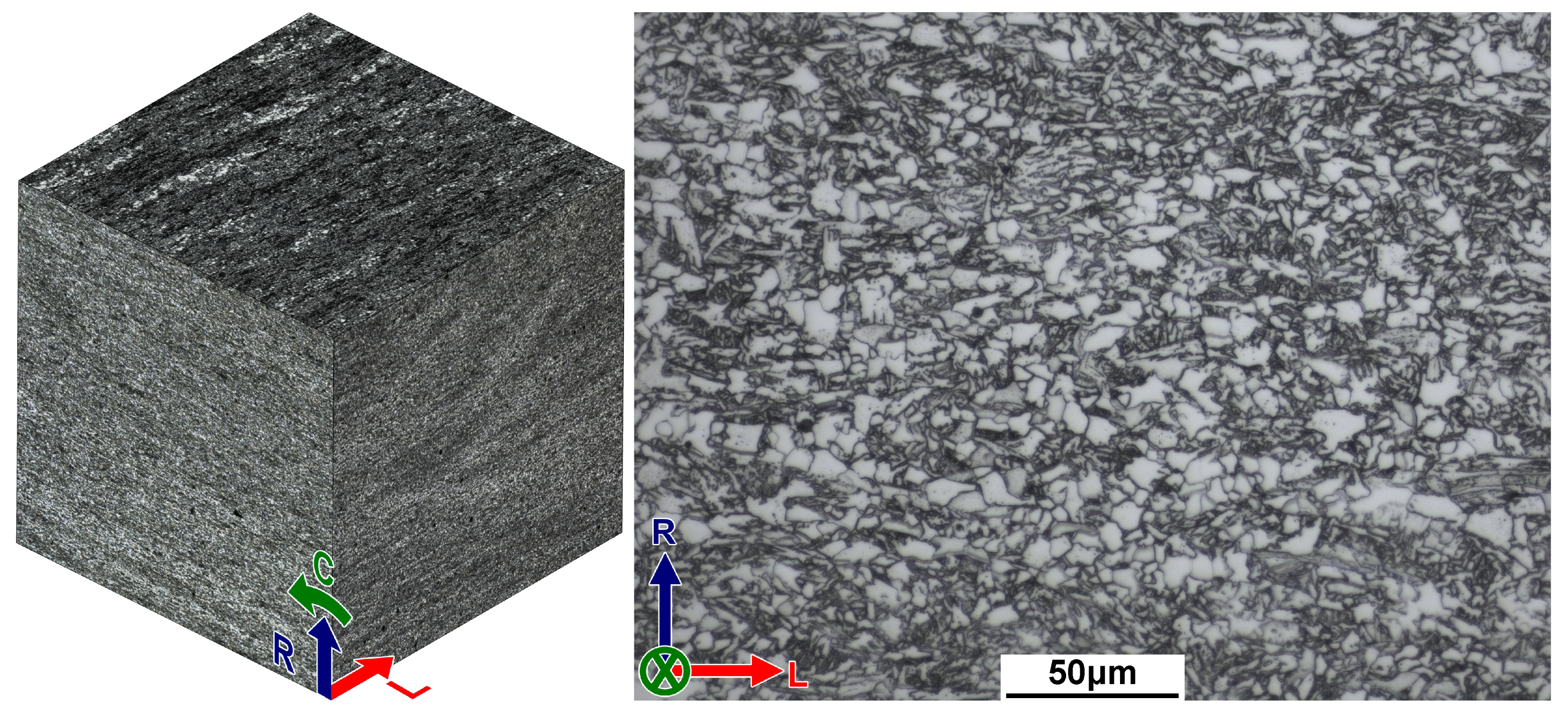

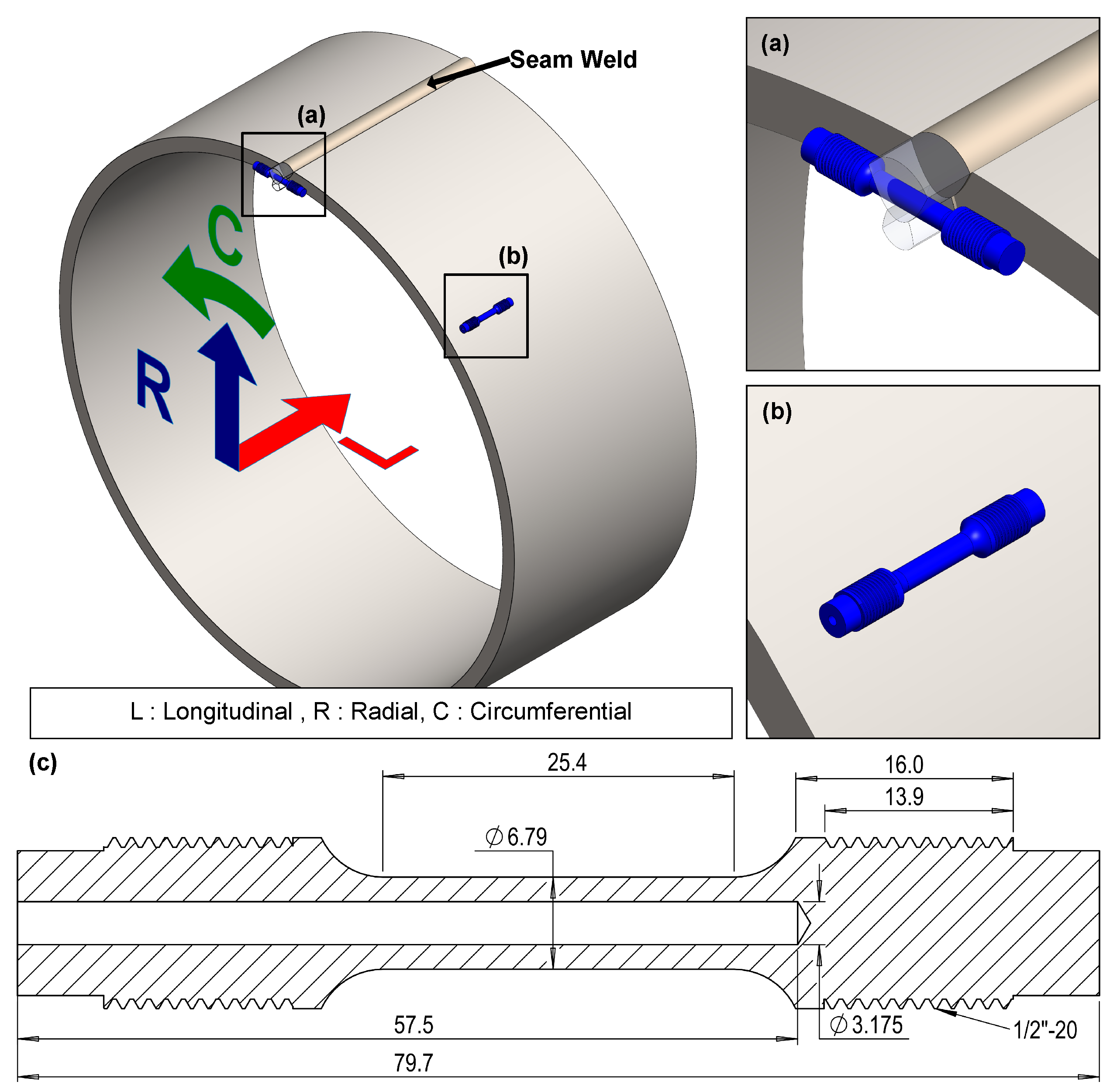
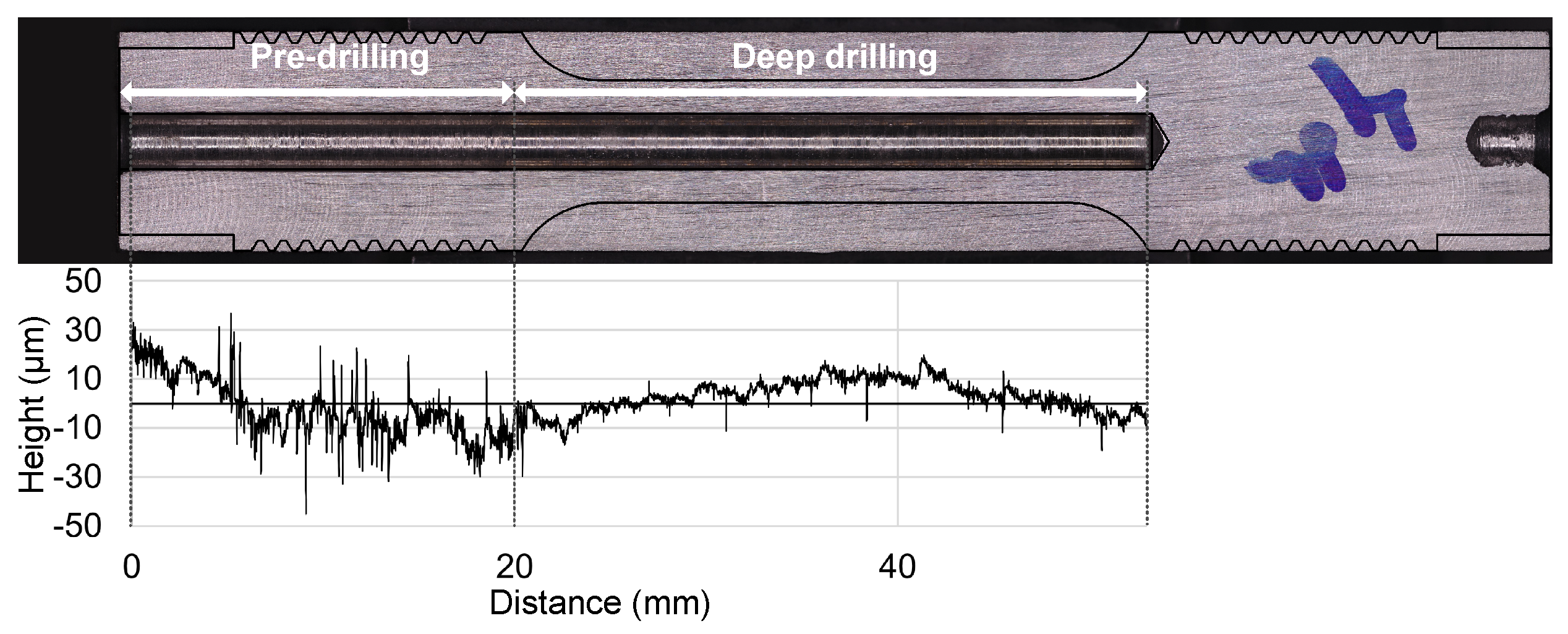
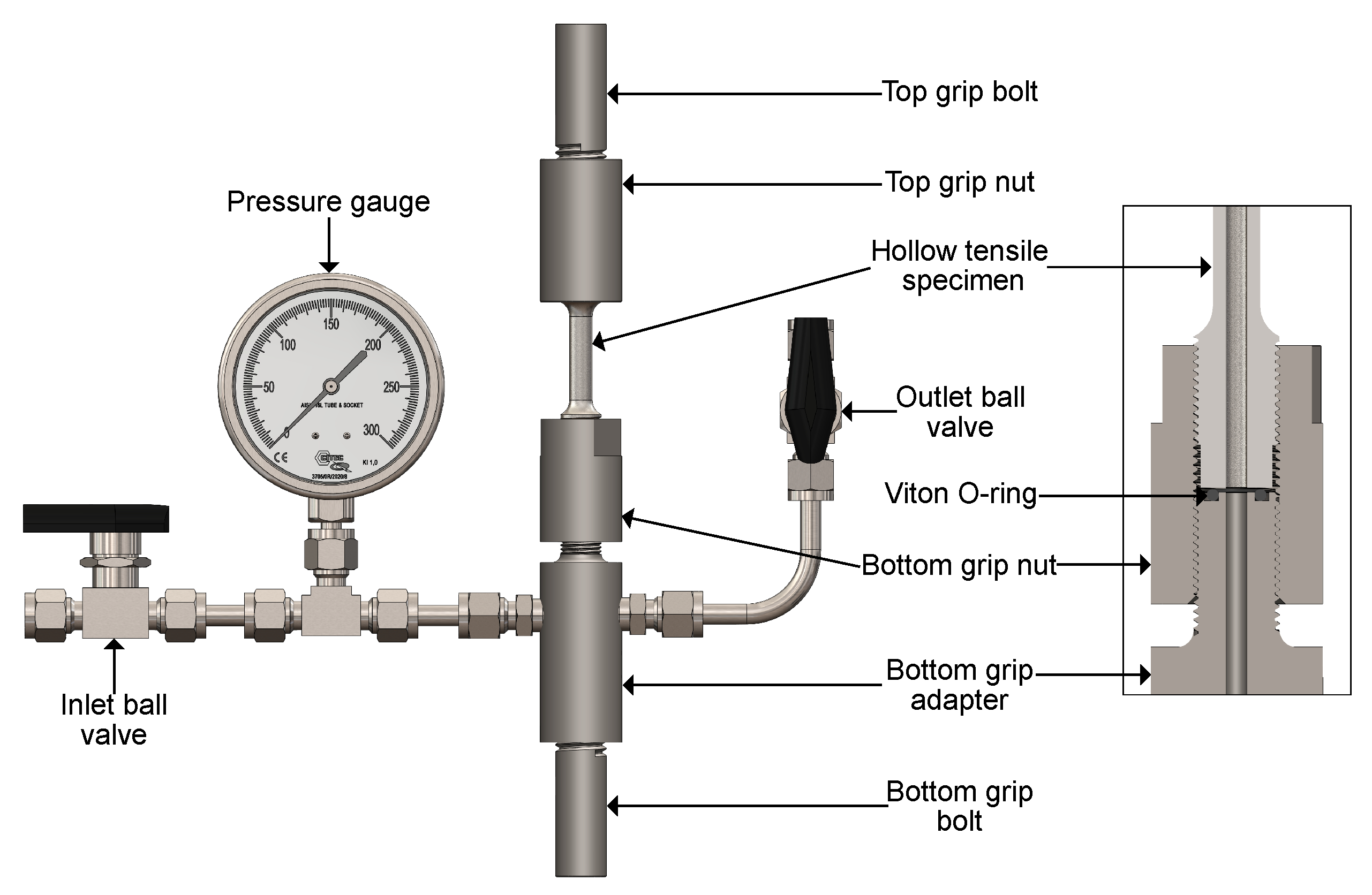
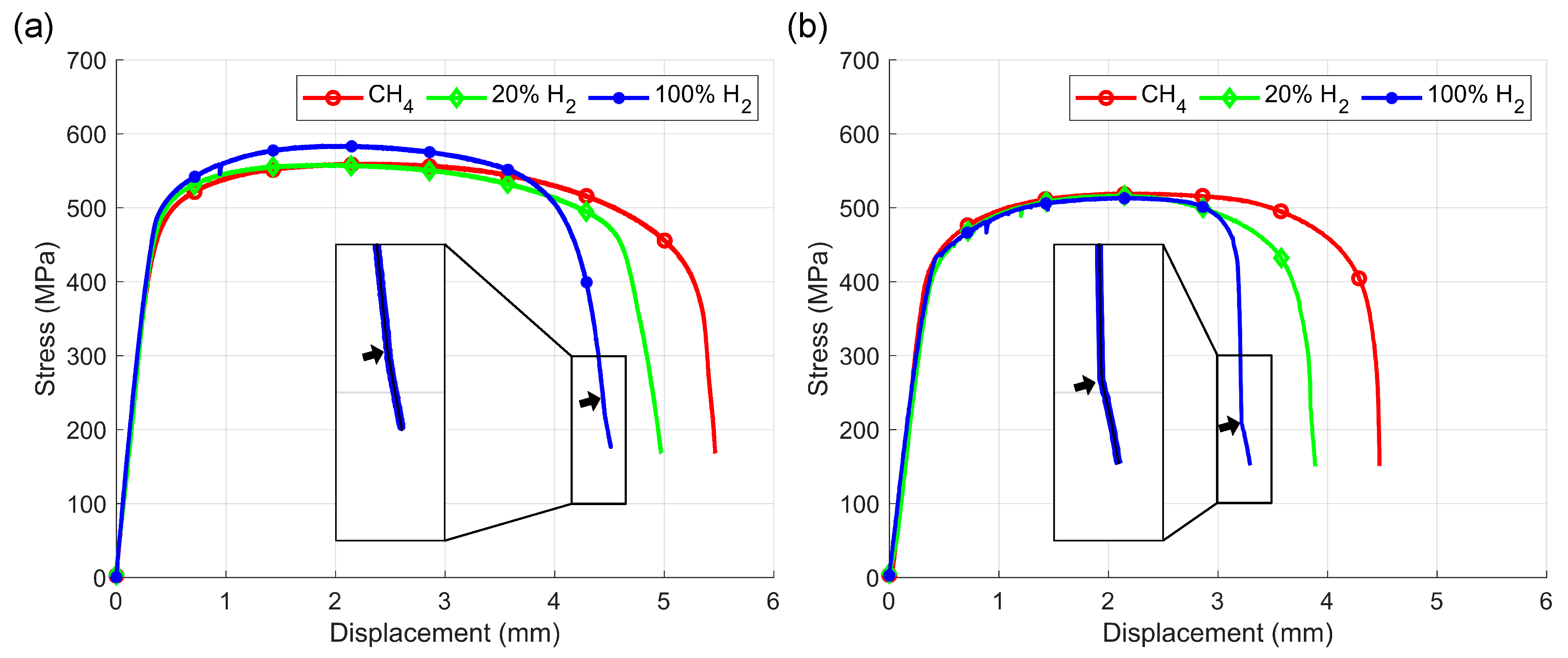
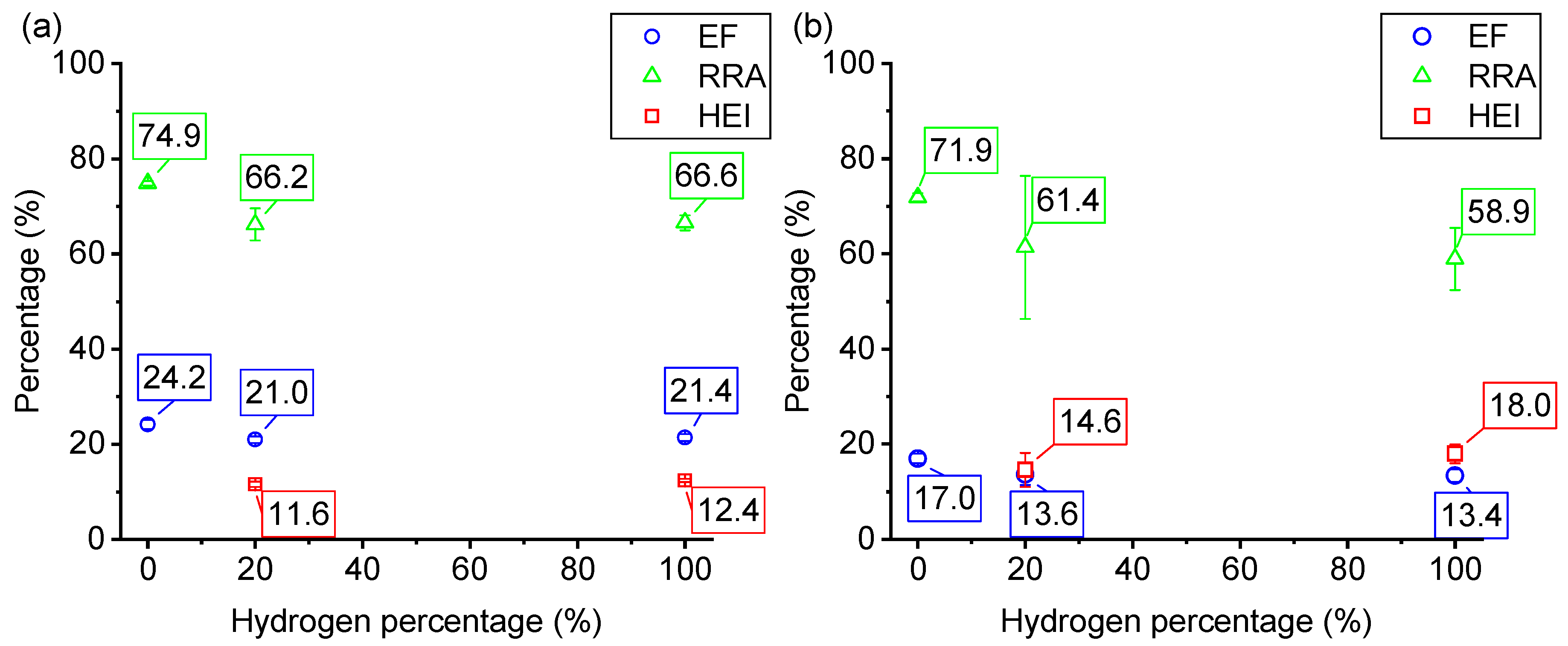
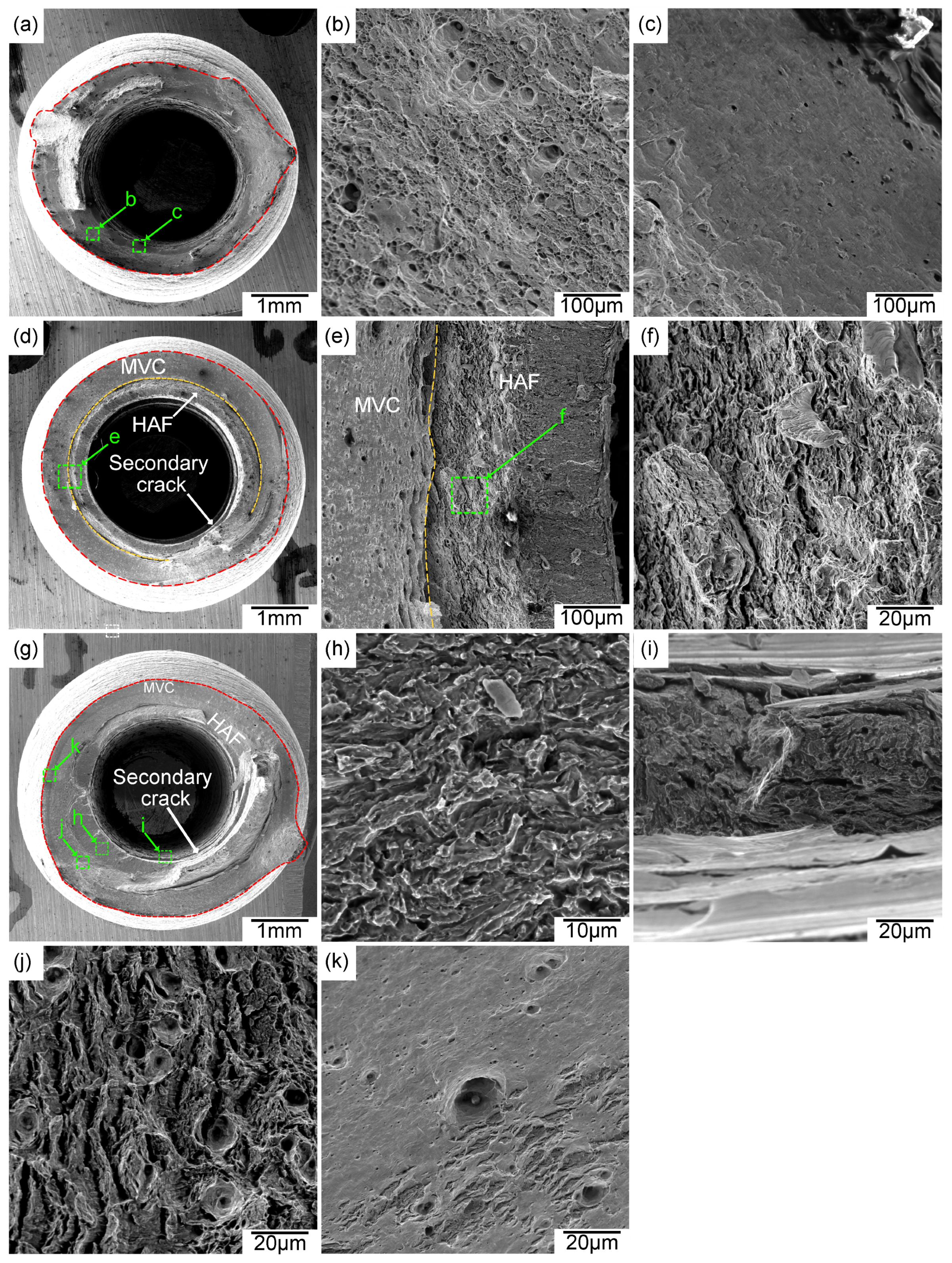
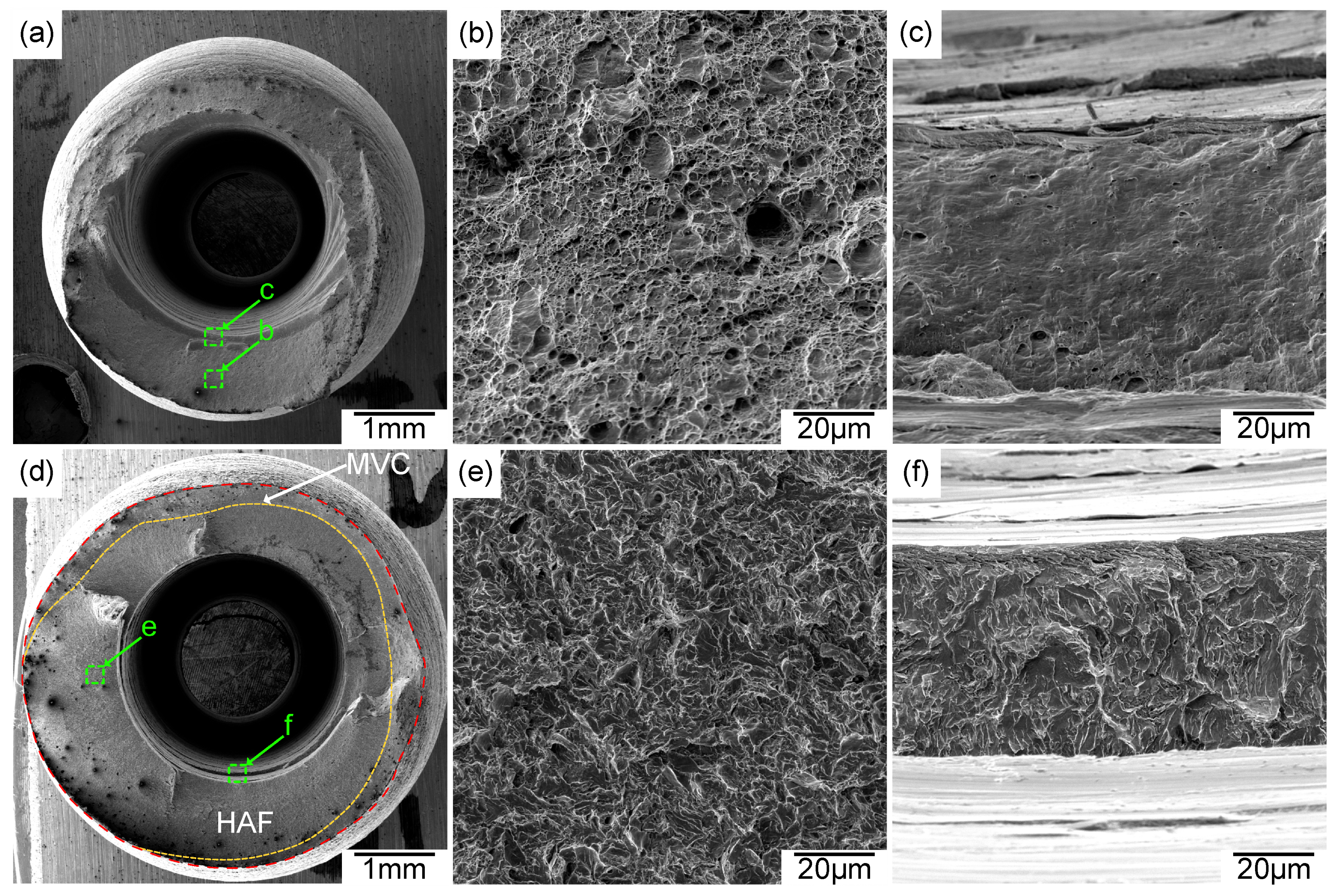
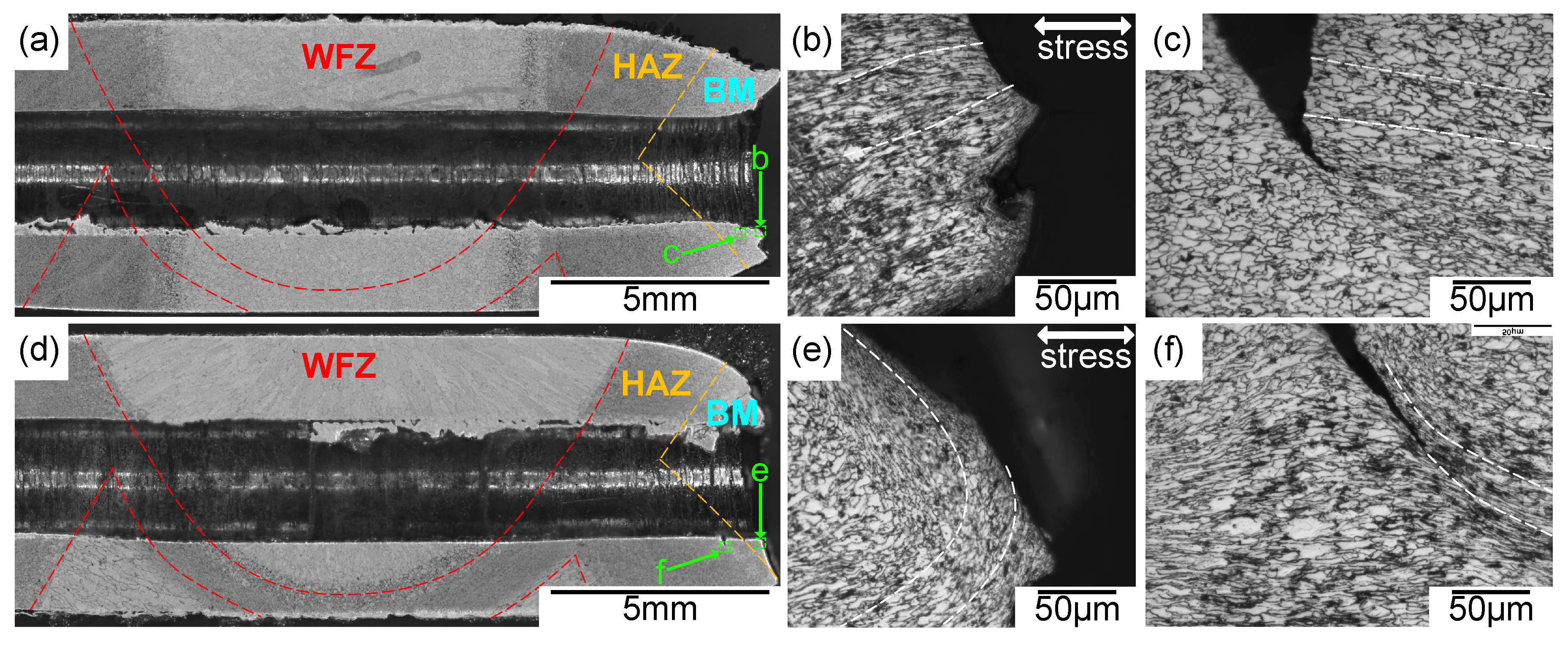
| Material | C | Mn | Si | Nb | Cr | Cu |
|---|---|---|---|---|---|---|
| Base | 0.087 | 1.476 | 0.219 | 0.021 | 0.018 | 0.011 |
| Weld | 0.107 | 1.326 | 0.291 | 0.014 | 0.017 | 0.012 |
| Material | Direction | Yield Strength | Tensile Strength |
|---|---|---|---|
| Base | Longitudinal | 477.5 ± 62.5 MPa | 560.0 ± 40.0 MPa |
| Weld | Circumferential | Not present | 520.0 MPa |
Disclaimer/Publisher’s Note: The statements, opinions and data contained in all publications are solely those of the individual author(s) and contributor(s) and not of MDPI and/or the editor(s). MDPI and/or the editor(s) disclaim responsibility for any injury to people or property resulting from any ideas, methods, instructions or products referred to in the content. |
© 2024 by the authors. Licensee MDPI, Basel, Switzerland. This article is an open access article distributed under the terms and conditions of the Creative Commons Attribution (CC BY) license (https://creativecommons.org/licenses/by/4.0/).
Share and Cite
Walallawita, R.; Hinchliff, M.C.; Sediako, D.; Quinn, J.; Chou, V.; Walker, K.; Hill, M. Evaluating the Effect of Blended and Pure Hydrogen in X60 Pipeline Steel for Low-Pressure Transmission Using Hollow-Specimen Slow-Strain-Rate Tensile Testing. Metals 2024, 14, 1132. https://doi.org/10.3390/met14101132
Walallawita R, Hinchliff MC, Sediako D, Quinn J, Chou V, Walker K, Hill M. Evaluating the Effect of Blended and Pure Hydrogen in X60 Pipeline Steel for Low-Pressure Transmission Using Hollow-Specimen Slow-Strain-Rate Tensile Testing. Metals. 2024; 14(10):1132. https://doi.org/10.3390/met14101132
Chicago/Turabian StyleWalallawita, Rashiga, Matthew C. Hinchliff, Dimitry Sediako, John Quinn, Vincent Chou, Kim Walker, and Matthew Hill. 2024. "Evaluating the Effect of Blended and Pure Hydrogen in X60 Pipeline Steel for Low-Pressure Transmission Using Hollow-Specimen Slow-Strain-Rate Tensile Testing" Metals 14, no. 10: 1132. https://doi.org/10.3390/met14101132






